Let’s take a look at the different types of horse boarding, what they include, as well as the pros and cons of each type, so you can figure out which one is best for you.
You may choose to board your horse because you don’t have a barn or enough space for a horse, you are inexperienced as a horse owner and want guidance, you want a better facility for riding purposes, you want to ride under a trainer, you don’t want to ride alone, or you want to make other equestrian friends.
There are many reasons why people decide to board their horse instead of keeping them at home. Whatever the reason may be for you, you will want to figure out what type of boarding is best for your situation before you start looking at barns. This will narrow down your search and help you find a suitable barn quicker.
Types of horse boarding include full board, pasture board, training board, partial board, self care board, coop boarding, and retirement boarding. Each barn will be different. Some barns may only offer one or two types of horse boarding, while other barns may offer more or less.
Now to go into the details about the different types of horse board so you can have a rough idea of what they include as well as the good and the bad of each.
Full Board
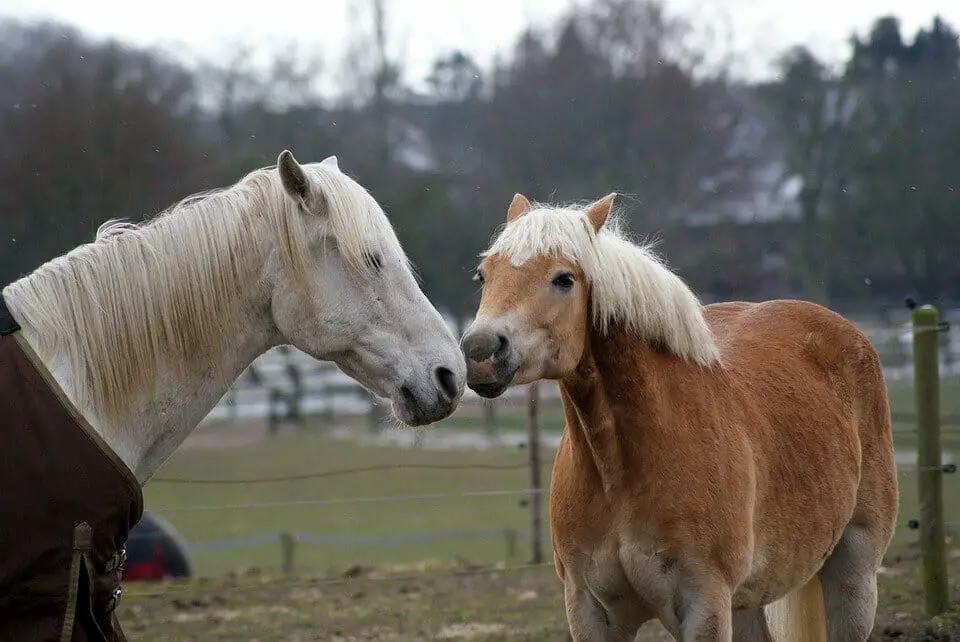
Full board is when your horse’s basic daily needs are met by the barn’s staff. Typically this includes a stall, turnout area, feed, hay, supplies and all the barn chores, such as bringing your horse in & out, cleaning the stall, picking the paddock, changing waters, feeding your horse which are done daily. You can basically go away for a couple weeks, come back and know your horse got what they needed.
Full board is practically a must for horse owners that have really busy schedules and can’t get out to the barn everyday. It can save you a lot of time. It is also comforting to know that there is a set of experienced eyes on your horse when you are not able to be there, making sure your horse is okay, not sick or injured.
Something to keep in mind. If you are full boarding you still need to be there for your horse. You are their advocate and their voice. You want to make sure they are okay. Check them over when you visit for any injuries, cuts and illness and see that they are being treated well. Though that is part of the job of the barn staff it is still your horse and sometimes barns don’t always catch these things or hold up their part.
Full board does not mean you only come up to ride on the weekends because your horse is being cared for everyday. Your horse will be out of shape, and prone to injury depending on what you are working on under saddle.
Full board is more expensive than most of the other types of horse board. You have to decide what is more important: your time or your money. Full board can range in price. You may be able to find an affordable barn in terms of full boarding, but generally self care or partial board is cheaper than full board, even with adding in the extra costs of hay grain and bedding.
Important Tip: Be careful about where you board. Not all barns are equal in terms of quality care even if they offer the same type of board, similar services, have a better facility or are more expensive. You may end up decided the barn you are at is not what you want for your horse. So do your homework before making your final decision.
Here is a list of what is typically included in full board:
- Stall & turnout area
- Feed bucket, water bucket, water trough, salt block holder
- Bridle rack, and saddle rack
- A place to put your tack truck or your grooming tote
- A place to hang halter and blankets by the stall.
- Stall cleaned daily
- Bedding added as needed
- Freshwater provided inside and out
- Your horse turned out and in
- Horse fed grain 2-3 times per day (limit of the amount of grain and type they use)
- Your horse fed hay 2-5 times per day (limit to the amount of hay and type they use)
- Your horse looked over daily for injury, cuts, or illness
- Paddocks picked out periodically, every week or several times a week
- Deworming routine
- Applying fly spray in buggy months (you provide the spray)
- Schedule routine vet and farrier care with group appointments
Many times with full board facilities there are horse professionals that work with the farm such as instructors, trainers, a veterinarian, farrier, saddle fitter, equine masseuse to name a few. Often full board barns will schedule appointments with the vet and farrier for routine visits. All fees from these horse professionals are extra costs.
You may find that you have much less control over your horse when you do full board or even partial board.
Some barns require you use the equine professionals that they are associated with and won’t allow you to choose a separate instructor, trainer, vet or farrier. Not all barns are like this but it is something you will have to ask about if you have a specific horse professional in mind you would like to use.
The barn may have hours when they are closed. Something you will want to consider if you are going to the barn later after work.
Often if your horse needs a different grain or more grain than what is provided, then you should expect to pay more money. If you want to use a different grain, then you will have to buy it yourself and provide it to the barn. More times than not you won’t get a discount for not using the barn’s grain.
If your horse just needs more grain than the limit provided then you will probably just be charged extra money for the extra grain being added to your horse’s feed bucket.
Any supplements you want your horse to have, you will be responsible for buying and giving to the barn staff. Sometimes barns have an extra charge for feeding your supplement to your horse. But many have feeding supplements to horses included in full board as long as you provide the supplements.
Despite the financial benefits and extra control you have with caring for your horse yourself, full board gives you more freedom to have fun with your horse instead of taking up your limited time with chores.
Pros & Cons Of Full Board
| Pros | Cons |
| Daily needs are taken care of. Able to get advice if you are an inexperienced horse owner. You will have more time to do other things, you need or want to do. Great for the busy equestrians who don’t have a lot of extra time. You don’t need to buy and lug hay, grain or shavings to the barn because it’s included in the board. Trailering is often available as an extra service if needed. Instructors and trainers at commercial barns are often available for lessons or training as an extra service. Other extra services may be available, which is convenient if you are going to be away for example, such as grooming, bathing, exercise riding, lunging, mane pulling, sheath cleaning, etc. Vet and Farrier routine care is usually scheduled. However, you pay for these services separately. | Extra services such as medicating, putting in supplements, fly spraying, blanketing and boots on turnout may not be included or cost extra money. Sometimes barns don’t feed your horse the type or enough hay or grain to your liking. You have to trust someone else to take care of your horse. If the barn holds your horse for vet and farrier it’s often seen as an extra service cost. You have less control over your horse than you would with self-care boarding or keeping your horse at home. You may be expected to use the barn’s vet and farrier instead of ones that you prefer. Full horse board costs more money than partial board and self care board. |
Pasture Boarding And Stall Boarding
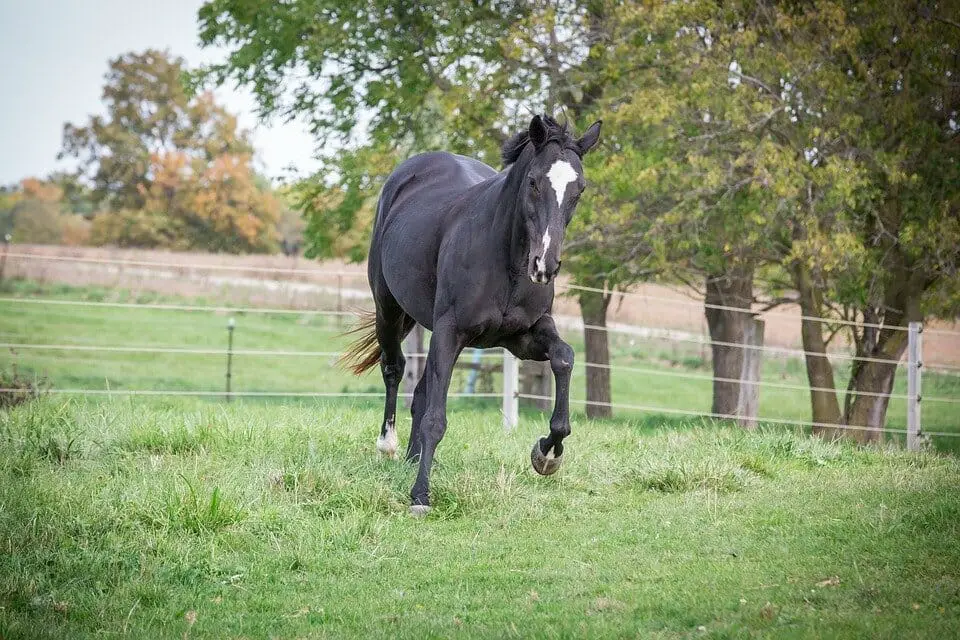
Pasture board and stall board are obviously different. But they can both be full board, training board, partial board, or self care board.
Pasture board is when the horse doesn’t have a stall to come into and they are out in a paddock or field 24/7. Pasture board is also known as field board. Typically the horse will have a run-in shelter in case of bad weather, or to be able to have relief from the flies. Often the horse will be turned out with other horses.
Stall board usually means that the horse has a stall they go into part of the time and a turnout paddock or pasture they go out in part of the time. Although some horses may be in a stall 24/7 if they have injuries or they are at a show barn that does not turn out, and just hand walks. I think that is terrible for a horse, physically and mentally.
When I have had injured horses I created a small enough turnout area so they wouldn’t be able to run around if they wanted to, but they were still outside getting fresh air and seeing the other horses.
With pasture board it is often cheaper because you’re not renting a stall for your horse that needs to be mucked and bedding is not being used. However the pasture still needs to be picked of manure on a regular basis to keep a healthy environment.
Another benefit to pasture board is that your horse is able to move around continuously, which is good for a number of reasons.
Everytime your horse steps down and lifts their hooves blood is circulating through their hooves and legs, helping with blood circulation through the body. In the stall they have limited space and are not moving around nearly as much as they would be outside in a larger space, which means there is less blood circulation.
When your horse is able to move around more it also helps keep their digestive system moving along as well as keeping their joints lubricated.
When considering pasture board or stall board you really need to look at what is best for your horse.
A horse that is hard to keep on weight may need a stall to have meals free from competition against other horses.
Pasture board can also be good for horses that have vices which have commonly developed from boredom or anxiety that comes from being in a stall. Unfortunately some of these vices don’t go away even after no longer living in a stall.
A horse that has arthritis may benefit from being on pasture board to be able to move around regularly to help stay more limber.
A horse with heaves which is associated with the horse’s breathing may benefit from living outside with fresh air.
A horse that is out on pasture board should be okay with being out in all sorts of weather conditions and you need to be at peace with that as well. Although they should have a run-in shed for shelter if they decide to seek shelter. I had a mare that would stand out in all kinds of weather and hardly ever went into her run-in.
If your horse is going to be in a stall consider creating a more fun enriching environment for them with stall toys specifically for horses.
There are different ways a horse will be fed grain out on pasture.
- Some don’t feed grain only hay and often use round bales.
- Some tie the horse to the fence post to eat out of feed buckets
- Some use feed bags
- Some use rubber feed pans and spread them out in the paddock. (The dominant horse usually chases the others away from their food when they finish their own.)
When looking at pasture board opportunities make sure there is a run in shed because sometimes the barn expects your horse to use trees as their shelter. But what about in the winter when the leaves have fallen, trees can be conductors of lightning because of their water content and tree branches can fall if struck or with heavy ice.
Sometimes pasture board can be self care, where you do everything for your horse. Keep reading to learn more about self care.
Pasture board can be a great option if you want a more natural environment for your horse, and if you want to save money, just make sure it is the best option for your horse.
Pros And Cons Of Pasture Board
| Pros | Cons |
| Cheaper monthly cost. Horse not as bored as when in stall. Better blood circulation. Better digestion. Better lubrication of joints. and less overall stiffness. Save money on hay when grass is available. Horse has fresh air. Horse is in a more natural environment than a stall. Horse gets more exercise. | The horse is not handled as frequently by barn staff. Competition for food if turned out with other horses. Usually requires more grooming for riding. Outside in all kinds of weather. Exposed to wild animals outside in the night. Potential danger of foundering from rich grass. |
Pros And Cons Of Stall Board
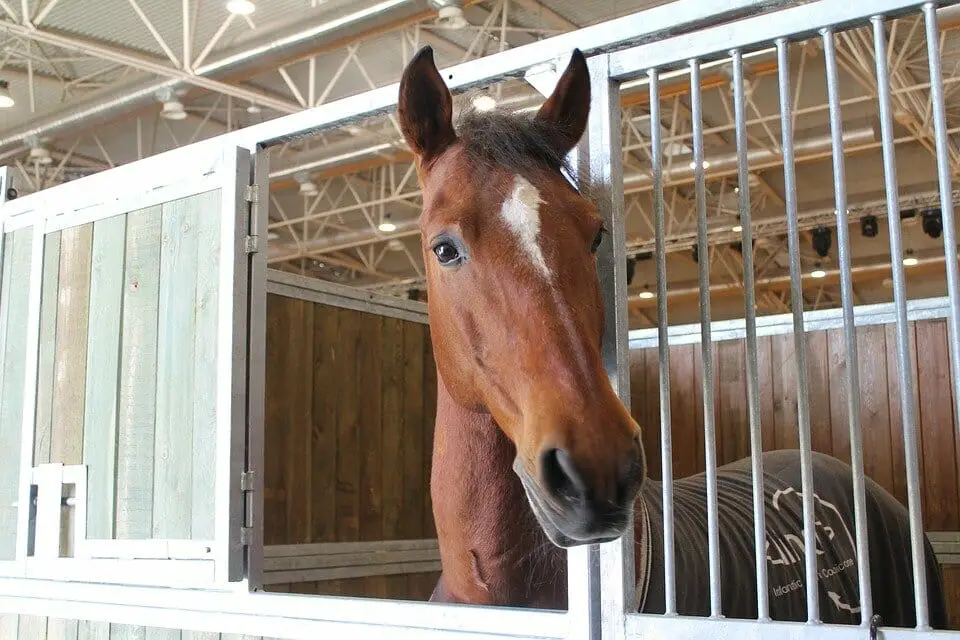
| Pros | Cons |
| Horse still gets time outside. Horse’s time on grass is controlled so risk of foundering is limited. Horse has less competition with food. Horse is contained at night away from wild animals and is more secure. Horse is often cleaner for grooming before you ride. Horse is watched over and checked on more often. Horse is handled daily. Easy access to catch horse. | Horse gets less exercise. Horse is stiffer from being in the stall for long periods of time. Blood circulation is not optimal from lack of movement. Lack of fresh air when in the stall which can also be dusty. Potential for boredom and anxiety in the stall. Potential to get cast in the stall. Digestive system not functioning optimally and potential for ulcers. Less of a natural environment for the horse. |
Training Board
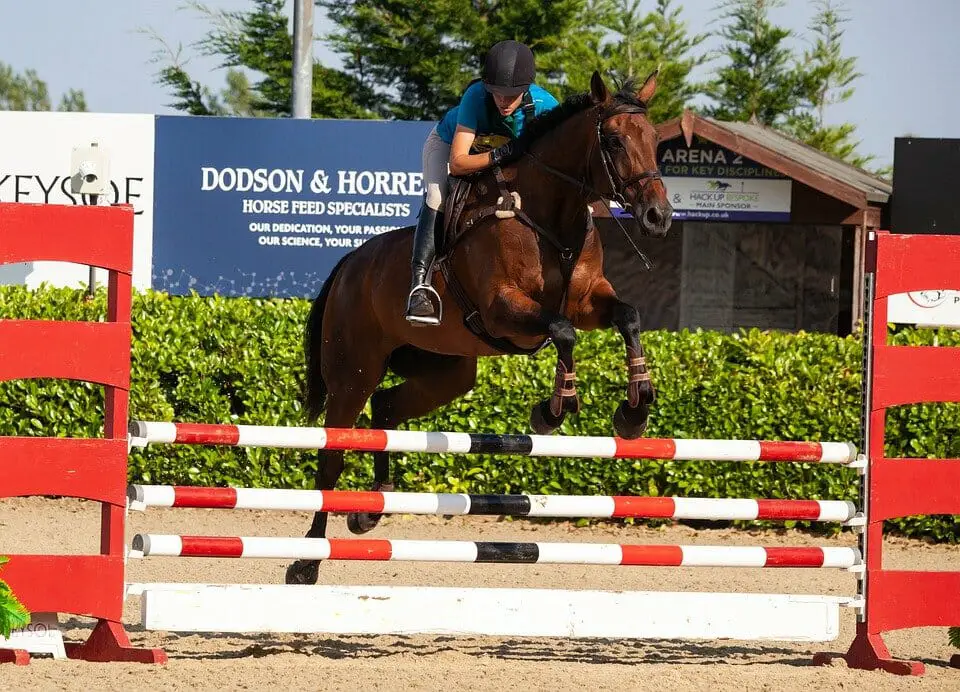
Training board is when you have you and your horse, just your horse, or a mixture of both in a training program with a professional horse trainer and or instructor and are boarding at their farm.
Training board can be beneficial to riders who have competition goals and want further training and coaching with their horses and for themselves.
This is also a good option if your horse is green or unbroke and you don’t have the skills or desire to take on the training by yourself. It’s also useful for horses that have had a long break and need a refresher course or a horse that has developed issues and needs retraining.
Training board typically included the benefits of full care board plus the added benefits of exercise, grooming, bathing.
Training board can be all riding lessons, all horse training or a mixture of both, depending on the program.
The training programs usually have different packages available. Such as full training, half training and partial training.
I will list several examples from training barns to give you an idea of what these may include.
| Training Barn 1 | Full training is 3 training rides per week and 2 lessons. Half training is 2 training rides and 1 lesson per week. |
| Training Barn 2 | Full training is a combination of 5 training rides or riding lessons per week. Half training is 3 training rides per week or 1 training ride and 2 lessons per week. |
| Training Barn 3 | Full training is 5 training rides per week and 1 riding lesson per week. |
If you are interested in training board make sure you understand what the training board offers. Some training programs where your horse is in full training you are restricted from riding your horse to make sure their training is consistent. Other training programs are centered around you riding the horse and improving together and then there are the training programs where it is a mixture of training rides and riding lessons.
Sometimes when your horse is at a barn in training you need to make appointments to come and see your horse if the horse is exclusively at a training barn where the trainer and possibly assistants alone ride the horse.
So figure out what it is you want, and don’t just assume ask lots of questions to make sure the training program is what you want for your horse.
Pros And Cons Of Training Board
| Pros | Cons |
| Your horse becomes better trained. Your horse gets in better shape and at a higher fitness level. You can have more fun riding a more responsive horse. Your horse can become more willing is and level headed with the right training. Your horse is getting exercised and groomed on a regular basis. If you are unable to go to the barn for a long period of time your horse will not lose condition but stay in shape. You will have a more fine-tuned horse for competition. Your horse can get over issues they are having. (As long as it is not pain-related. But the horse trainer should have the knowledge to check for pain.) | More expensive. Less control over your horse than even full board. You might find you don’t like training methods used. Trainer could do more damage than good depending on how skilled they are and if they actually know what they are doing. Limited time riding your horse. Possible limited time seeing your horse. |
Partial Board
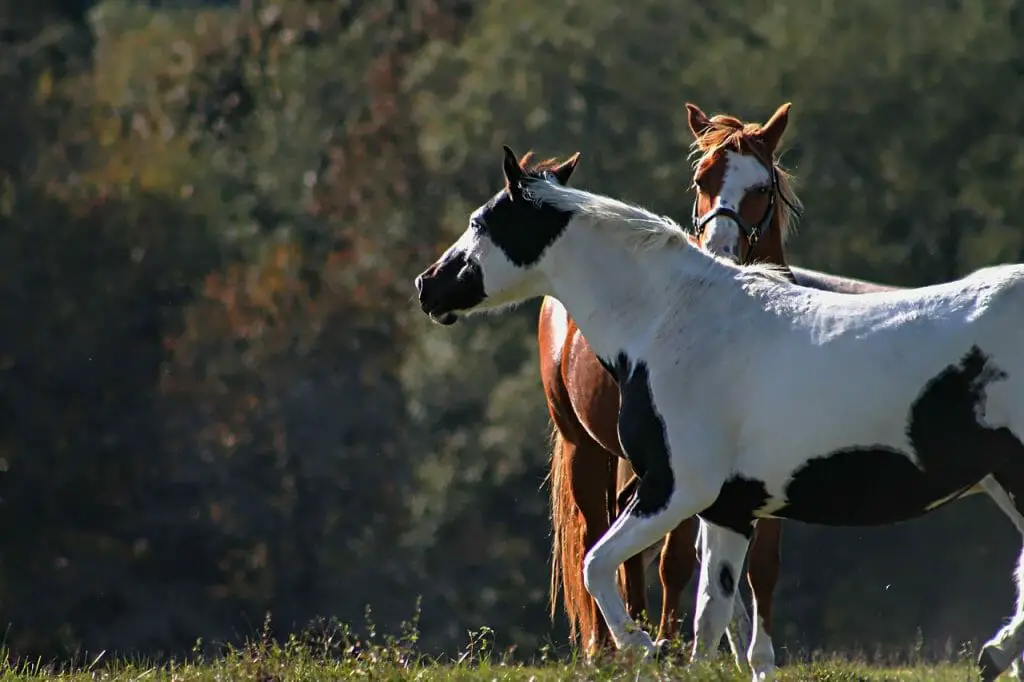
Partial board is also known as semi-rough board. It is cheaper than full board because it doesn’t include everything that full board includes.
You as the owner are responsible for either doing part of the work for your horse, providing your horses supplies, or a mixture of both. It will depend on the barn and how they are organized for what you will have to do.
If you are to do the barn work, often you will only have to come once a day as opposed to twice a day if you were doing self-care board. You may have to feed your horse grain, turnout or in with hay and freshwater, muck stall, pick paddock and set up grain for next feeding.
If you are providing supplies and the barn does the work, then you will need to stock up on horse grain, hay and shavings or some other kind of horse bedding. Shavings are most commonly used.
Although there are exceptions to the above. I have seen barns that say they are partial board but they are really self care board which are different. If you are required to do all your horses care and hay grain and bedding are not provided by the farm then it shouldn’t be called partial board… that is considered self care or rough board.
Whatever the situation ends up being for what’s actually considered partial board, you will have more responsibility than full board and be more hands on with your horses care.
To help give a better idea of potential arrangements I will give you some real life examples.
| Partial Board 1: | All the same benefits of full care, but you provide your own grain |
| Partial Board 2: | The owner is responsible for keeping buckets scrubbed clean and must clean stall daily. The owner must provide their own grain, bedding, and extra hay. The barn provides 2 flakes of hay 2x per day and hay you provide, feeds grain am and pm, turns horses in and out. Blanket changes and feeding supplements included. |
| Partial Board 3: | Owner cleans stall daily and supplies hay and grain. Everything else is taken care of. |
Because partial board can vary so much in what it offers, if this is the boarding route you want to go, it would be a good idea to figure out the type of arrangement you want.
For example if you work during the day you may want to find a barn that does morning feed and turnout or if your schedule is sporadic you may want to find a barn that does all the feeds and turnout.
Partial board can be a more budget friendly boarding option but at the same time not be as time consuming as self care board.
Pros And Cons Of Partial Board
| Pros | Cons |
| Cheaper than full board. You have a little more control over your horse with partial board. You can choose what grain you want to get for your horse Use of the facilities. Farm may schedule routine horse care with vet and farrier. | More responsibility. You will have to go to the barn every day at least 1x per day. Sometimes you don’t get full use of the facilities. You may have to pay extra for supplies such as hay grain and bedding. |
Self Care Board
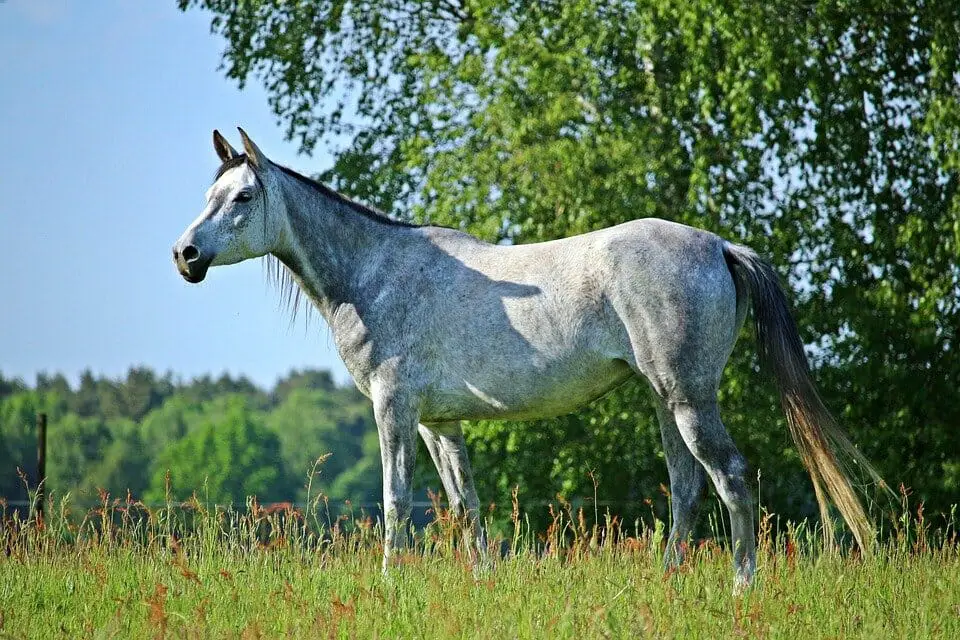
This is the cheapest kind of board if you are on a budget and is great if you have the time to do all that is involved with self-care board. Self-care board is also known as rough board and it is basically DIY horse boarding.
You are responsible for all your horses care, scheduling and finding horse professionals, getting everything your horse needs. This kind of boarding is often best for more experienced horse owners that have owned horses before. The board you are paying is for the stall, paddock, pasture and use of the riding facilities.
With self care boarding you will need to come to the barn at least 2x per day and when the vet and farrier come to catch the horse and hold them. It’s hard work and a big commitment. It is almost as much of a commitment as keeping a horse at home. Sometimes more and sometimes less. More if you are responsible for manure removal, dragging the arena and other farm maintenance. Less if the farm maintenance is taken care of for you. Because then you have to add the travel costs getting to the farm where as at home you would already be there.
With self care board you end up spending more time at the barn which gives you an opportunity to bond with your horse more than if someone else did the care for you.
This kind of boarding gives you the most control over your horse. You see your horse everyday so you can check that your horse is free from sickness and injuries. You are able to make sure they are getting what they need and you get to decide what you want to feed your horse.
The easiest kind of self care board is when the horse is also on pasture board. You won’t need to muck a stall daily but it is still beneficial to pick out the paddock daily, however it’s not as big a deal if you miss a day picking the turnout compared to missing a day mucking the stall.
When you are considering self care board make sure that you figure out the costs of hay grain and bedding or whatever else you need and factor those costs into the monthly bill. Depending on where you do rough board sometimes there are full board barns that are cheaper than the full cost of rough board, with all the supplies.
You will also have to make sure you have enough time available everyday to take care of your horse and be able to still ride or spend time with your horse. Do you have a backup person in case you weren’t able to make it to the barn so they could care for your horse? Super important! Horses are susceptible to colic when their diet doesn’t stay consistent and they always seem to find ways to get hurt.
What kind of vehicle do you have? With rough board you will either have to pick up your own hay, bedding and grain or find a place that will deliver to the barn. If you are going to pick it up you will need a vehicle that you can fit it into and don’t mind getting dirty. Using the bed of a truck is your best bet.
Lastly consider how far away the barn is. You want it to be closer than you would care about if it was full board. Close enough that you can drive over quickly and easily since you will be going there so often.
Pros & Cons of Self Care
| Pros | Cons |
| More time at the barn with your horse. You are in charge of your horses well being.You get to decide what grain to feed your horse. You get to decide how much food your horse gets. You get to decide how much turnout time your horse gets. You have much more control. Satisfaction from taking good care of your horse. Taking care of your horse can be a nice quiet time to unwind and de-stress. | Hard Work. You must have a lot of time available. Have to schedule going to the barn around your work and life. Doesn’t give you a lot of free time. You have all the responsibility on your shoulder. You need to find horse professionals to work with. There may not be a trainer or instructor if you are struggling with your horse and want help. You need to be available to your horse 365 days a year and 24 hours a day on call in case of emergency. |
Coop Board
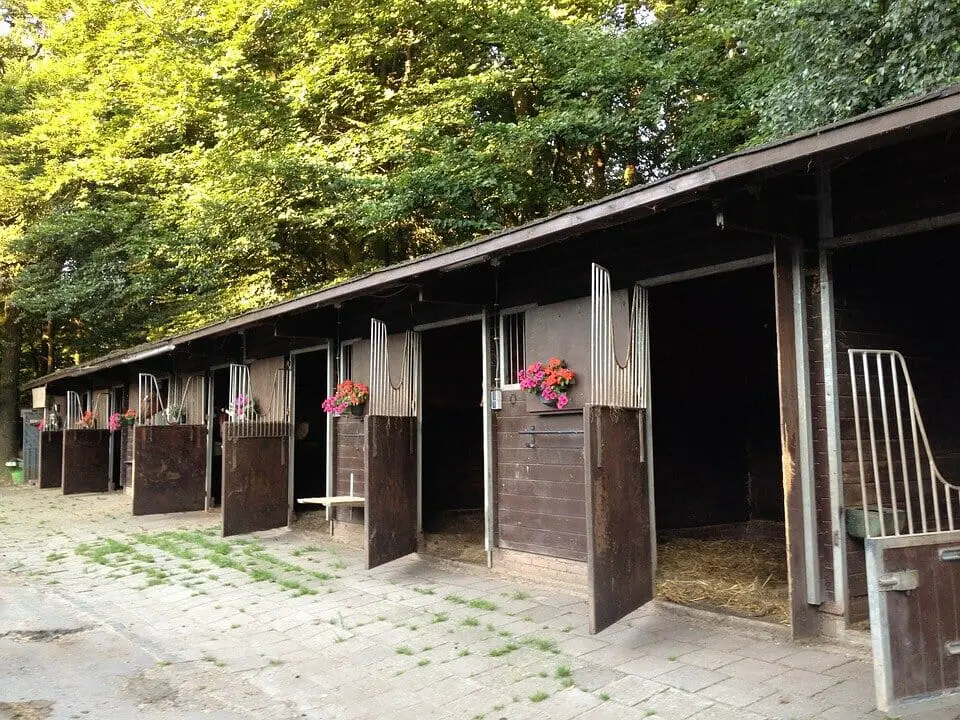
Coop horse boarding is similar to partial care boarding and self care boarding.
Coop board is when you are fully responsible for your horse’s care and supplies, but you are in a barn community of other rough boarders and you share the workload.
The fact that you share the workload and don’t have to come to the barn 2x per day everyday is why it is also sort of like a partial care boarding arrangement.
However with partial care boarding you have trained barn staff caring for your horse, whereas in a coop boarding you have horse owners of various experiences and methods of handling horses caring for your horse.
Most coop situations will have you cleaning your own stall everyday, dumping scrubbing refilling water, bedding as needed, setting up hay in the stall and grain in a bucket for the evening.
But sometimes boarders are willing to trade each other mucking. You muck for me this day I’ll muck for you that day. Or other rough boarders are willing to muck for some extra cash, like $5-$10 for mucking and setting up stall.
Usually you will have assigned times that you care for the horses in the barn. For example:
Am horse care:
- Feed breakfast hay & grain in stalls
- Hay turnouts & check waters
- Turn out horses
Pm horse care:
- Check stalls have hay and water
- Turn horses in
- Feed horses dinner grain
Boarders: Sara (coordinator or manager), Emily, Alison, Erica, Tim, Meghan
| Horse Care | Sun | Mon | Tues | Wed | Thurs | Fri | Sat |
| Am Horse Care | Sara | Emily | Alison | Meghan | Alison | Sara | Sara |
| Pm Horse Care | Emily | Tim | Erica | Tim | Sara | Erica | Meghan |
If you think a coop boarding situation sounds like a great idea, make sure you are comfortable with the people that board there, and can trust them with your horse.
Pros And Cons of Coop Board
| Pros | Cons |
| You get the price benefit of self care board with the horse care benefit similar to partial board. You have more control over your horse than full board. You can decide what your horse gets for food. You have more flexibility with your time than self care board. You have help taking care of your horse so you don’t have to come to the barn twice a day. You possibly don’t have to come to the barn everyday if you are trading chores. It is easier to have back up help with other boarders than taking care of your horse all on your own. | Some of the boarders may not treat your horse how you would like. Some boarders caring for your horse may not be experienced horse people. You still may need to come to the barn every day to muck out the stall or have to pay extra money to have someone else muck your stall. You don’t have as much freedom with your time as full boarding. You are more involved with your horse’s life compared to full boarding. There’s potential to be more drama between boarders since you are taking care of each other’s horses. |
Retirement Board
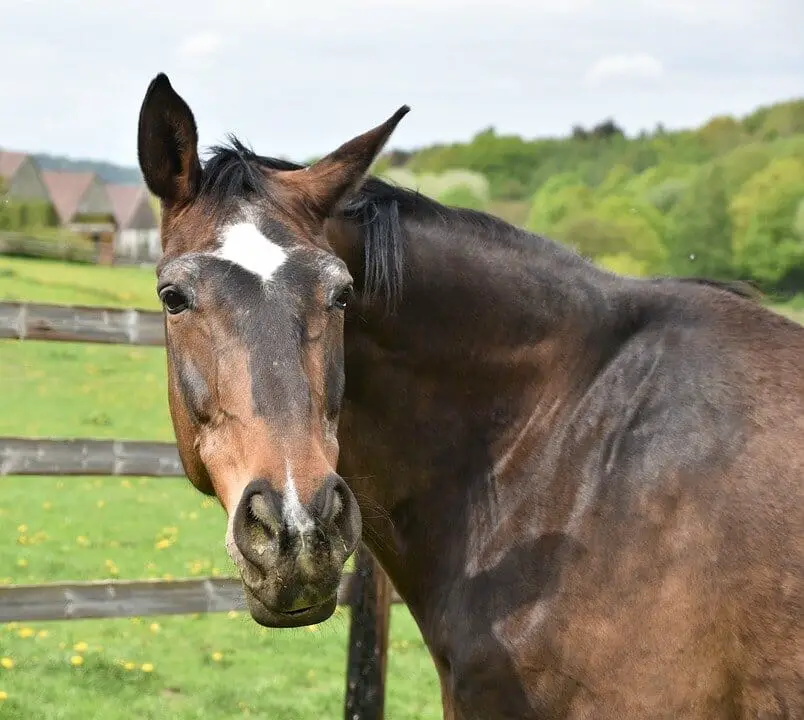
Retirement board is not simply dumping a horse and leaving them. It is most similar to full board. It is often more affordable than expensive competition barns. This is a place you can send your horse to spend the rest of their days with other retired horses. These farms are usually quiet, relaxing with not a lot of buzz going on.
Many horses come from homes far from where the owner lives because the farm may be less expensive in the country. The farm will take pictures or video when the horse arrives and send it to the owner. Then commonly they will send updates with photos on how your horse is doing.
A lot of times retirement board has the horse living out on pasture so they can finally just be a horse. Especially if the horse had been a show horse spending a good portion of their lives in a stall. However if the horse needs a stall for whatever reason some barns offer stall board as another option.
Retirement packages tend to be all inclusive with scheduling and holding for horse professionals such as the vet and farrier. Some barns include the routine vet and farrier care in the boarding cost and some charge you extra on the invoice. This board is geared towards senior horses that may need a bit more care to keep them happy. Blanketing, administering supplements and medications, medical treatments, grooming. These are usually included.
The barn may have extra fees for you to pay for but essentially the horse is fully in the care of the retirement farm and you are not supposed to have to worry about doing any part of the horse’s care. Retirement farms are also good for horses that have career ending injuries if you end up buying another horse and don’t have time for both horses but don’t want to give away or sell your horse and have them end up who knows where.
Some retirement farms the owners still come and visit and spend time with their horses. I even saw a retirement farm that allowed light riding for the owners to enjoy a leisure manicured trail ride. Everything is very low key. Because some horses still enjoy going out and doing something.
Pros And Cons Of Horse Retirement Board
| Pros of Retirement Board | Cons of Retirement Board |
|---|---|
| Cheaper than expensive show barns. Your horse is fully cared for and you don’t have to lift a finger… figuratively. Your horse gets to relax with other retired horses. Let a horse be a horse and finally have freedom to roam. Vet care and farrier care is all scheduled and taken care of. You just pay the bills if not included in the monthly board. Knowing your horse is safe instead of ending up somewhere bad. | Expensive like full board is. May be far away from where you live. You are not able to monitor your horse every day. You have very little control over your horse. You are paying for a horse that you may not be seeing. |
Extra Services At Horse Boarding Stables
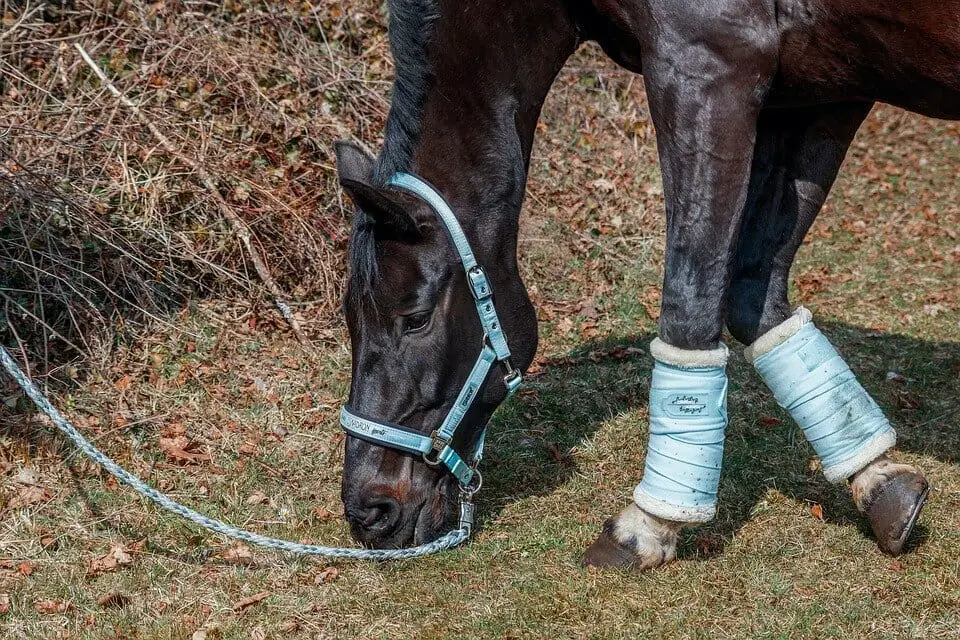
Most often full boarding barns will have extra services available that you can ask for which cost extra money. The most common reason for extra services is for the barn to make extra money because boarding doesn’t bring in much profit alone.
Barns that are self-care board and coop boarding often do not have extra services. Some barns with partial board if they also have full board may offer extra services. Full board sometimes includes extra services, such as fly spraying, blanket changes, putting fly masks on and off, and feeding supplements.
Here’s a list of what is considered extra services:
- Horse supplements supplies and equipment
- Riding lessons
- Horse training rides
- Exercising your horse (lunging or riding)
- Grooming services
- Tack cleaning
- Bathing
- Blanketing
- Feeding supplements
- Administering medication or medical treatments
- Fly spray
- Hand walking
- Wrapping legs
- Applying turnout boots
- Holding for vet, farrier or other horse professionals
What Type Of Board Is Best For You?
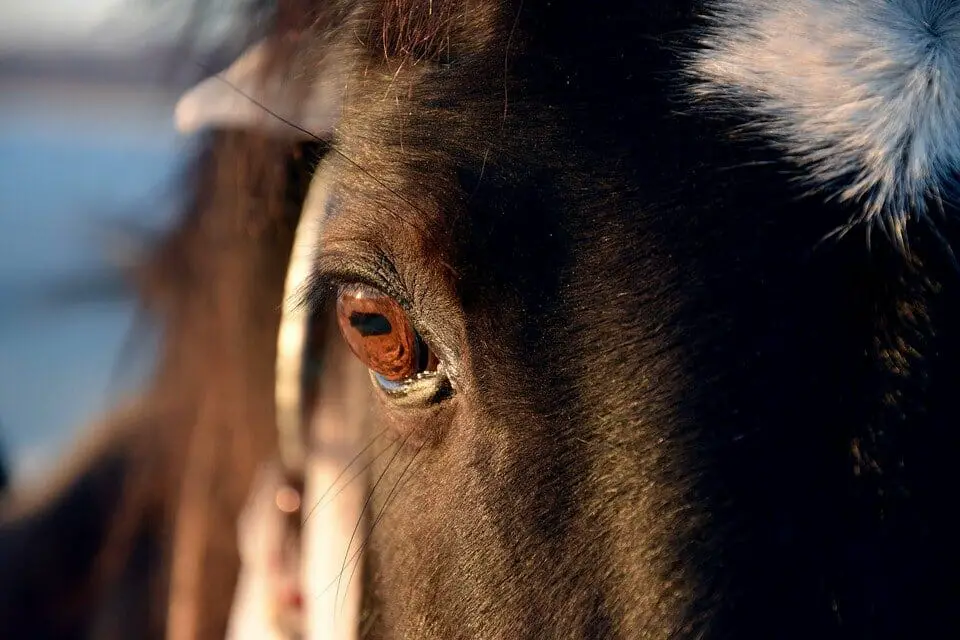
When you are deciding on the type of horse boarding you want to do, think about your horses needs and your own needs.
Questions to ask yourself to help figure out which type of board situation you want:
- When am I able to go to the barn?
- What is my budget for board including hay grain shavings? (figure out what your total monthly budget is for your horse, subtract the extras like vet, farrier, supplements, lessons, shows, treats, whatever else and your left with your board budget.)
- Do I have time to go to the barn everyday or 2x per day?
- Do I want to be at the barn all the time and care for my horse?
- How far will I travel for each type of boarding?
- Does my horse need specialized care by myself?
- Is it hard to keep weight on my horse?
- Do I care if I have my own vet and farrier or use the barns?
I hope this article helped you understand the different types of horse board options. If you have any questions about the different types of board you can contact me and I will do my best to answer them.
Once you figure out what type of boarding you are wanting to go for, the next steps is searching for barns with available boarding, checking them out, and choosing one.
Cheers, Kacey


such great information for those who are looking for the best horse boarding for their equine companion. These tips will be very helpful.
If anyone wants an exceptional facility for their horse so you can contact here:- https://www.mymanehaven.com/
Thank you I appreciate it. Hopefully it does help someone when deciding what to do for boarding. Good luck with your horse business!